When Bayonetta 3 was first announced during the Game Awards in 2017 as a Nintendo Switch exclusive, I knew then and there that purchasing Nintendo’s handheld was an inevitability by virtue of it being my Bayonetta machine. Now that Bayonetta 3’s here and I’ve finally rolled credits, I kinda wish that it wasn’t made in the first place. Although Bayonetta 3 is chock full of shiny new weapons and monsters to test them out on, there’s not enough fanservice in the world to make up for how much of a catastrophic letdown it is, thanks to its garbage fire of a story and its mistreatment of its beloved characters.

Editor’s note: Seriously though, spoilers ahead. Like a lot of ’em. — David.
PlatinumGames’ Bayonetta 3 is a character action hack-n-slash game. You play as Bayonetta, a powerful and fashionable Umbran witch with the power to slow down time with a perfectly timed dodge. Although Bayonetta 3’s launch should be cause for celebration given that it coincides with the series’ 10th anniversary, its legacy won’t be one of triumph; this is the worst game in the trilogy for how it rakes fans over piping-hot coals during the march toward its lacklustre finale.
By and large, Bayonetta games are rollercoaster rides of high-octane action that let you unleash a multitude of satisfying combos upon waves of monsters amid creative combat arenas. They also all feature convoluted storylines with dense jargon, timey-wimey plot structures, and low-interest villains with vague or basic motivations. Usually, fans can excuse these shortcomings because they don’t dampen the thrill of the bonkers rollercoaster ride of Bayonetta’s infectious bravado and combat prowess. While Bayonetta 3’s story is easier to follow than usual, it does so much damage to new and old characters alike that it would have been better left untold.
The MacGuffins this time are the chaos gears. Aside from sounding an awful lot like Sonic’s chaos emeralds, they also function similarly in that collecting them grants the user powers to manipulate time and space. In Bayonetta 3, the Umbran witch must collect all of the chaos gears before the game’s primary antagonist, Singularity. The short and sweet of Singularity’s grand scheme involves hopping the multiverse and killing Arch-Eve, i.e. the most powerful Umbran witch there is, and siphoning her powers until he’s the only living being in the universe.
Read More: One Of Bayonetta 3‘s New Magical Powers Transforms Her Into…A Train
While there’s nothing inherently wrong with a game being formulaic, Bayonetta 3’s dedication to this recipe bottlenecks any exciting gimmick within the game’s chapters. In prior Bayonetta games, chapters felt wholly unique to one another thanks to their inventive setpieces. In one moment you could be fighting a bunch of angels in the Vatican, and the next you’re surfing through a typhoon contending with a giant manta ray. Although Bayonetta 3 has its fair share of enthralling setpieces, progressing through Bayonetta 3 begins to feel like sleepwalking through the same concepts over and over.
Bayonetta 3’s stages proceed as follows:
- Meet a Bayonetta from an alternative universe
- Witness Alt. Bayonetta and her Alt. Jeanne die at the hands of Singularity
- Receive their chaos gears and gain one of their abilities
- Saunter into the next universe and repeat
Even initially exciting additions like Bayonetta 3’s 2D kaiju fights lose their lustre after a while because they overstay their welcome and feel utterly disconnected within the game’s repetitive structure.
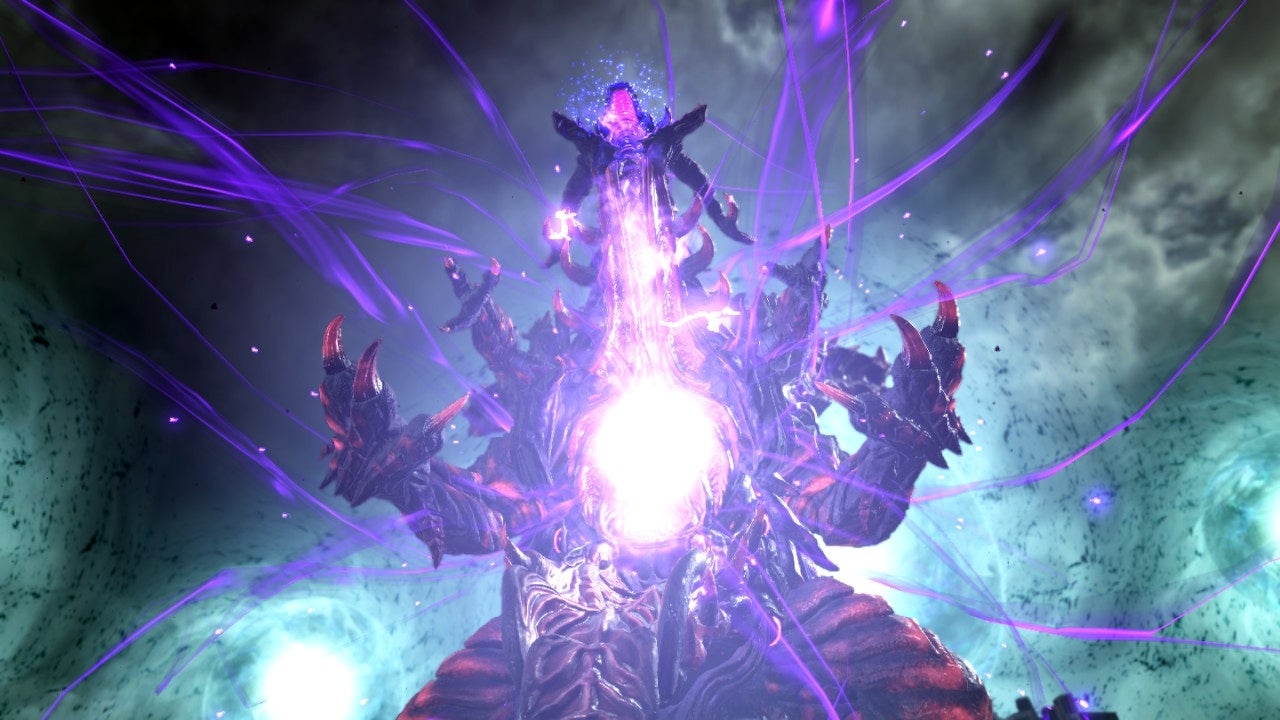
In a break from prior entries, exploration is key in Bayonetta 3. The game features a dedicated waypoint-toggle button so you don’t have to guess which routes lead to bonus items and optional challenges and which lead to story progress. You may want to give the extra stuff a skip, though, as Bayonetta 3 becomes exhausting to play if you try for a completionist run. Straying from the beaten path to take on witch trials becomes tedious, and its platforming time trials are a bore. While completing these trials does unlock stuff like new items and moves over the course of the game, the flurry of challenges mostly serve as padding to space out Bayonetta 3’s half-baked story.
Visually speaking, Bayonetta 3 isn’t much of a looker. For whatever reason, the graphical artifacts on everyone’s faces make them look like they’re made out of sandpaper, especially in the Switch’s handheld mode. While I usually don’t harp on a game’s graphics, it was hard not to notice that Bayonetta’s model looked smoother and shinier in the eight-year-old Bayonetta 2. Bayonetta 3 has a new, barebones photo mode feature, but it seems pointless.
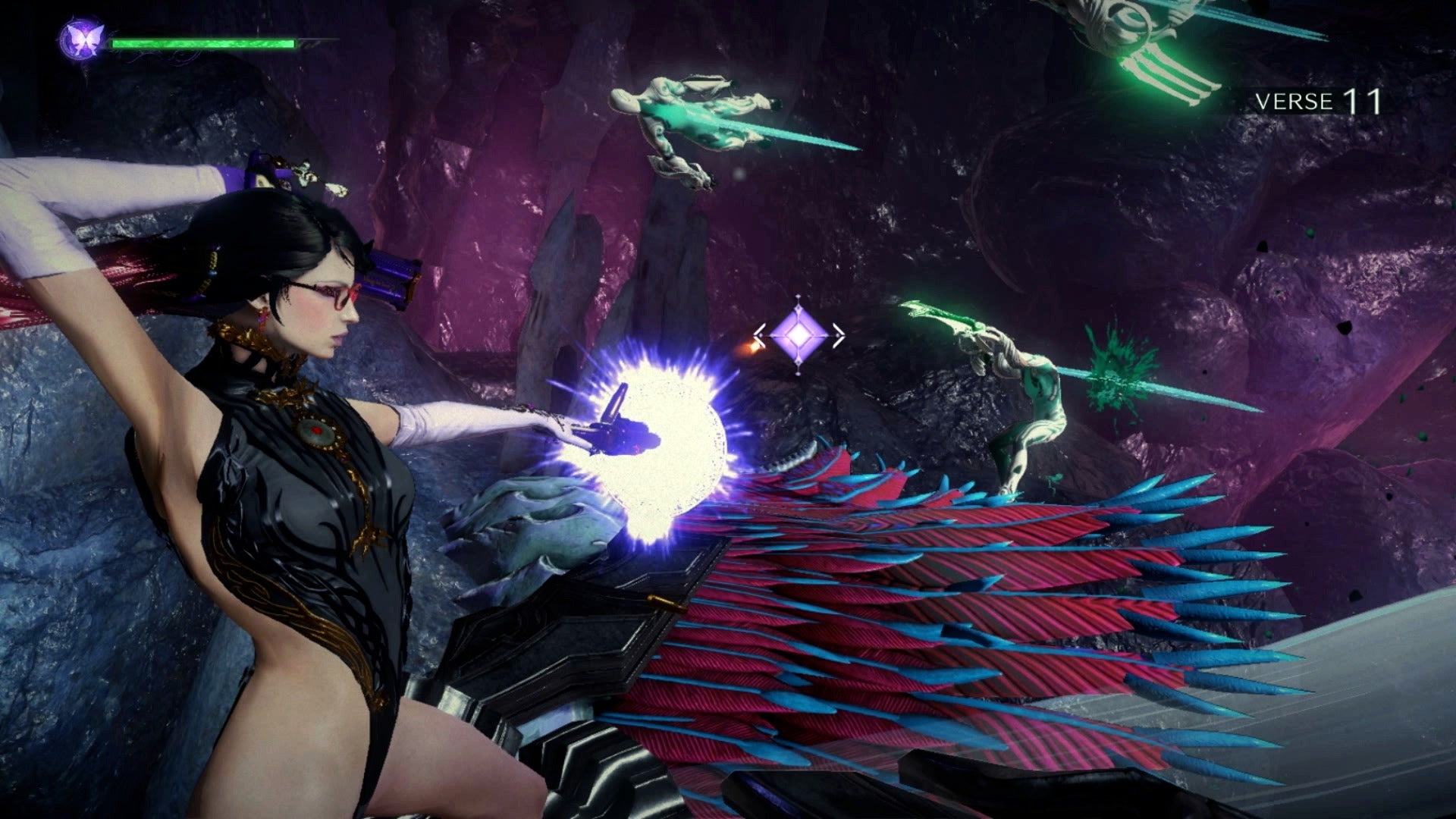
Combat-wise, Bayonetta 3 is arguably the best the series has ever been, a pure platinum sparkly statue of the witch herself, if you were to grade it on the game’s combat results scale. One new gimmick in Bayonetta 3 lets you take control of demons on the battlefield. However, doing so makes Bayonetta immobile, so you’ll need to be cognisant of where she’s positioned so your combos aren’t unceremoniously interrupted by an attacking enemy.
Another, Demon Masquerade, allows Bayonetta to fuse with her weapons, take on their form, and unleash a flurry of demonic combos at the cost of magic power. My favourite Demon Masquerades were Dead End Express and Ribbit Libido-BZ55l, which transformed Bayonetta into a demonic train and turned her singing voice into a weapon, respectively.
Demon Masquerade is a much-welcomed addition to Bayonetta’s toolkit, adding a whole new dimension to the game’s combat by letting your domesticated demon start your combos or serve as an exclamation point. The only downside here is how unsatisfying it feels to use these attacks against the uninspired new enemies.
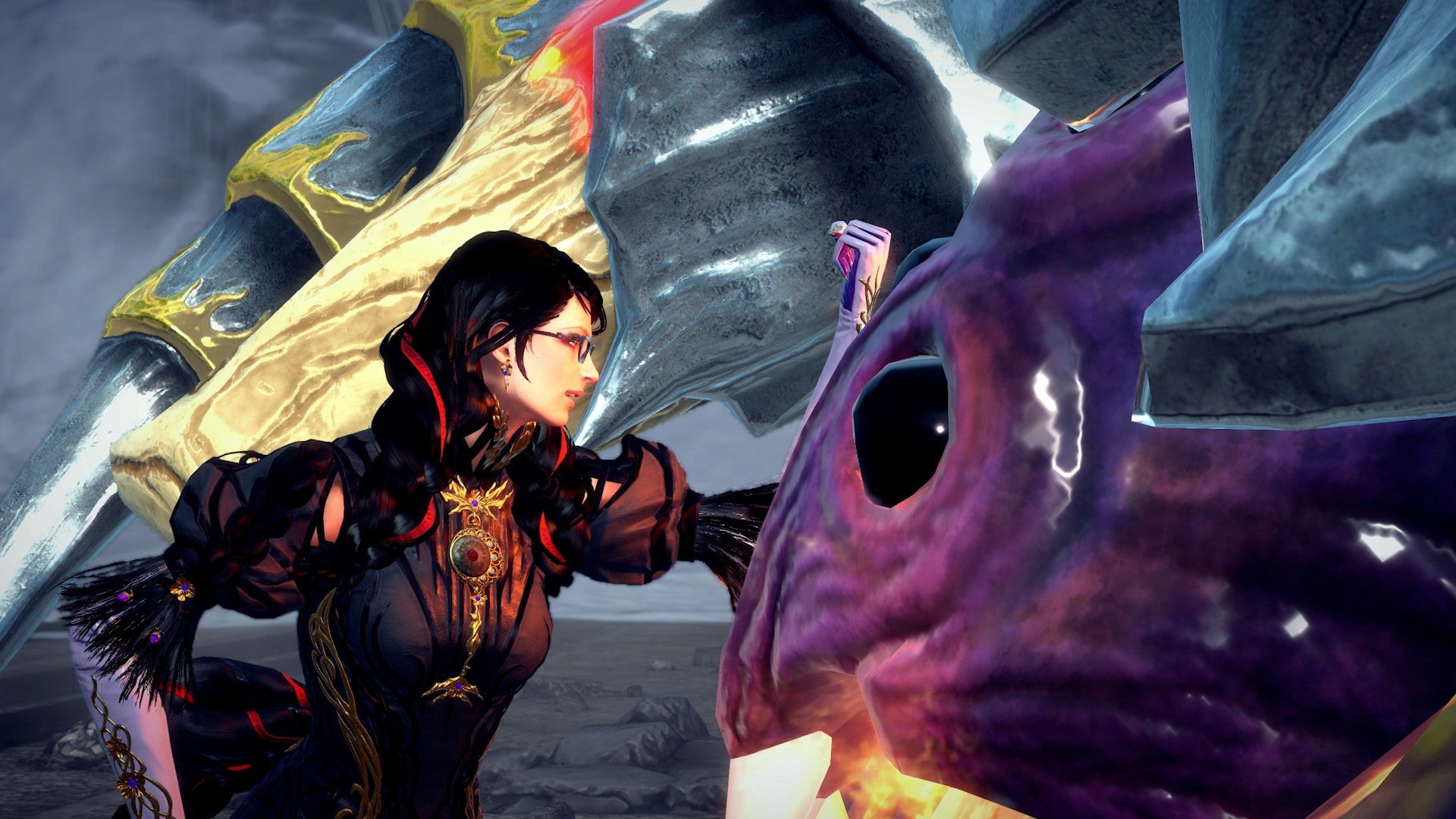
Bayonetta 3’s main enemy types are homunculi, artificial constructs created by corrupted humans. Their humanoid forms are a bore to hack through and even less impressive visually because of their bland, neon green Pepsiman designs. The challenge modes give you a break from the lacklustre homunculi by bringing back the infernal demons and angels from prior games, but this backfired in that it just made me long to play Bayonetta 3’s predecessors instead. While the new additions to the game’s combat system managed to coax me out of outright hating the 20 hours I spent playing Bayonetta 3, its storytelling left me questioning whether it was worth the five-year wait.
The one shining light in Bayonetta 3’s story is its new playable character, Viola. Similarly to how Nero was a breath of fresh air for the Devil May Cry series, so too is Viola in Bayonetta 3 thanks to her charming personality and killer moves. In contrast to Bayo and Jeanne’s suave and snooty dommy mummy personas, Viola is a clumsy punk rocker girl who trips over her would-be-cool one-liners and bumbles her way through boss battles. However, her antics never cross the line from endearing to grating thanks to how charming she is. Instead of triggering witch time through dodging, Viola parries attacks with her long katana. This takes some getting used to, since prior Bayonetta games taught us to dodge whenever possible.
Unfortunately, Viola’s inclusion is marred by the relatively limited time you get to play as her in comparison to Bayonetta, as well as a major story beat.
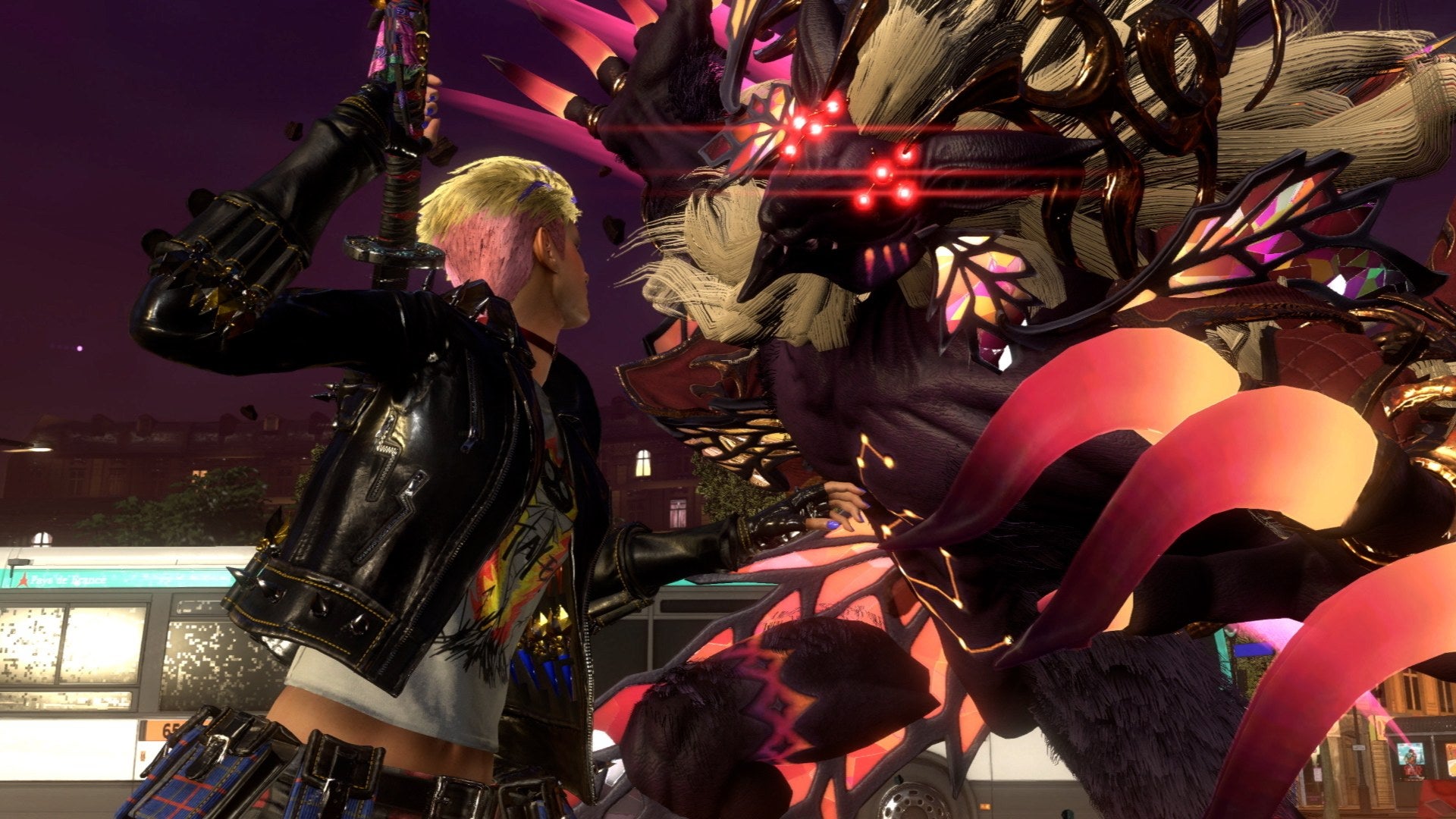
In chapter seven — the midway point of the game — it’s revealed that Bayonetta and Luka, the failson journalist, are Viola’s parents. Previously, Luka served as a predominantly unreliable character who could only competently serve as comedic relief for Bayonetta to emasculate. But in Bayonetta 3, the Umbran witch treats Luka like a husband she can’t take anywhere, her little mew mew. It’s also revealed that Luka is the werewolf-like infernal beast that gave Bayonetta and Viola trouble in previous chapters, despite him never having that kind of power in previous games.
While I’d prepared myself for the other stiletto to drop after this bizarre revelation, no amount of prep time could cushion how frustrating it was to witness Bayonetta 3 push Luka down my throat both as a big-time player within the franchise and as Bayonetta’s love interest when Jeanne, a better-written character who has much more chemistry with Bayo, was being misused left and right.
HAPPY BAYONETTA DAY AND BISEXUAL DAY PERFECT DAY TO REMIND YOU ALL THAT BAYONETTA AND JEANNE ARE A CANON COUPLE AND THIS IS OFFICIAL ART pic.twitter.com/OTQNuTSmMY
— kk spider 🕷 (@azuremarill) September 24, 2021
Since Bayonetta first debuted in 2009, the lanky witch has been an icon in the LGBTQ+ community, celebrated by queer fans. Bayonetta even managed to become a point of obsession for queer idol Lady Gaga. Bayonetta’s queer popularity comes from her camp waacking, battles against Christian figures seeking to persecute her, and her relationship with Jeanne. The whole point of Bayonetta 2 was for Bayonetta to go to Hell and back just to bring Jeanne back to life. Outside of the games, series creator Hideki Kamiya has referred to Jeanne and Bayonetta as a couple, and Bayonetta character designer Mari Shimazaki released official art of the gal pals’ domestic life. So you can see how Bayonetta 3’s decision to make Luka and Bayonetta canon comes off pretty terribly.
Read More: Bayonetta 3 Reviews Say It’s Stylish And Fun But Flubs The Ending
[review heading=”Bayonetta 3″ image=”https://www.kotaku.com.au/wp-content/uploads/sites/3/2022/11/04/bc95fef57234998958a78e031435b319.jpg” label1=”Back of the box quote” description1=””This one is not for the gays.”” label2=”Liked” description2=”The JoJo’s Bizarre Adventure-esque stand battles with Bayonetta’s infernal demons. ” label3=”Developer” description3=”PlatinumGames” label4=”Release Date” description4=”October 28″ label5=”Type of game” description5=”Hack-n-slash character action game” label6=”disliked” description6=”Its Dr. Strange: Multiverse of Madness plotline, the shoe-horned romance, and its ending.” label7=”platform” description7=”Nintendo Switch” label8=”played” description8=”20~ hours until I gave up on trying to be a completionist and wanted the nightmare to end.” ]
Once Bayonetta and Jeanne finally share the screen together toward the game’s finale, giving me some semblance of the chemistry I’d come to love in the Bayonetta franchise, Jeanne is unceremoniously killed off by Singularity. Turns out Dr. Sigurd, a character whom Jeanne was charged with rescuing during a side-scrolling Metal Gear Solid-esque spy quest, was Singularity all along. Even when the game threw Jeanne a bone by giving her something to do instead of being a damsel in distress, it was all to just kill her off, making the time spent during her missions feel pointless. At this point, I opted to skip out on most of the once-enjoyable witch- and time trials and just mainline the rest of the plot so I didn’t need to spend any more time than necessary playing Bayonetta 3.
I could give a gory blow-by-blow on all the ways Bayonetta 3’s third-act plotting fails the character and her fans, but suffice it to say that PlatinumGames let me down one last time by killing Bayonetta off too. Of course, this happened right after she took off her glasses to kiss her “destined” lover Luka one last time. The game then has the gall to include a self-congratulatory dance number to pass the torch to Viola, as if gaining a new series protagonist at the expense of Bayonetta and Jeanne’s character assassination was worth celebrating.
Although Bayonetta 3 sequel baits itself in its after-credits, its ill-advised twists have truly sapped my enthusiasm for further adventures in this universe. If I were to revisit the Bayonetta franchise again, I’d most likely opt to replay Bayonetta 1 or Bayonetta 2 instead of subjecting myself to Bayonetta 3’s lacklustre story again.
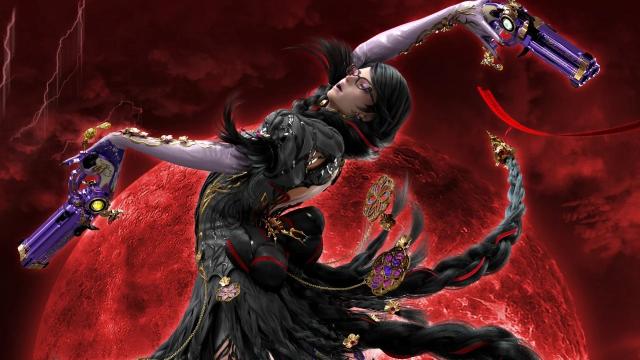
Leave a Reply